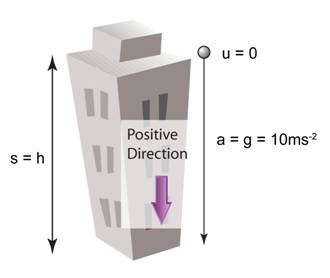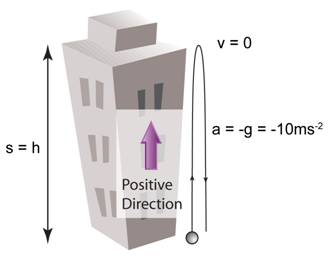A gravitational field as a region in which an object experiences a force due to gravitational attraction.
Gravitational Field Strength
- The gravitational field strength at a point in the gravitational field is the gravitational force acting on a mass of 1 kg placed at that point.
- The unit of gravitational field strength is N/kg.
- The gravitational field strength is denoted by the symbol "g".
 g = Gravitational Field Strength
g = Gravitational Field Strength
F = Force acted on an object
m = mass of the object.
Gravitational Acceleration
- The gravitational acceleration is the acceleration of an object due to the pull of the gravitational force. It has the unit of ms-2
- The symbol of gravitational acceleration is " g ".
- Gravitational acceleration does not depend on the mass of the moving object.
- The magnitude of gravitational acceleration is taken to be 10ms-2.
Important notes:
- Gravitational acceleration does not depend on the mass of the moving object.
- The magnitude of gravitational acceleration is taken to be 10ms-2.
Gravitational Field Strength vs. Gravitational Acceleration
- Both the gravitational field strength and gravitational acceleration have the symbol, g and the same value (10ms-2) on the surface of the earth.
- When considering a body falling freely, the g is the gravitational acceleration.
- When considering objects at rest, g is the Earth’s gravitational field strength acting on it.
Free Falling
- Free falling is a motion under force of gravity as the only force acting on the moving object.
- Practically, free falling can only take place in vacuum.
Case of Free Falling 1 - Falling from High Place

When an object is released from a high place,
- its initial velocity, u = 0.
- its acceleration is equal to the gravitational acceleration, g, which taken to be 10ms-2 in SPM.
- the displacement is the of the object when it reaches the ground is equal to the initial height of the object, h.
Case of Free Falling 2 - Launching Object Upward

If an object is launched up vertically,
- the acceleration = -g (-10ms-2)
- the velocity become zero when the object reaches the highest point.
- the displacement of the object at highest point is equal to the vertical height of object, h
- the time taken for the object to move to the maximum height = the time taken for the object to fall from the maximum point to its initial position.